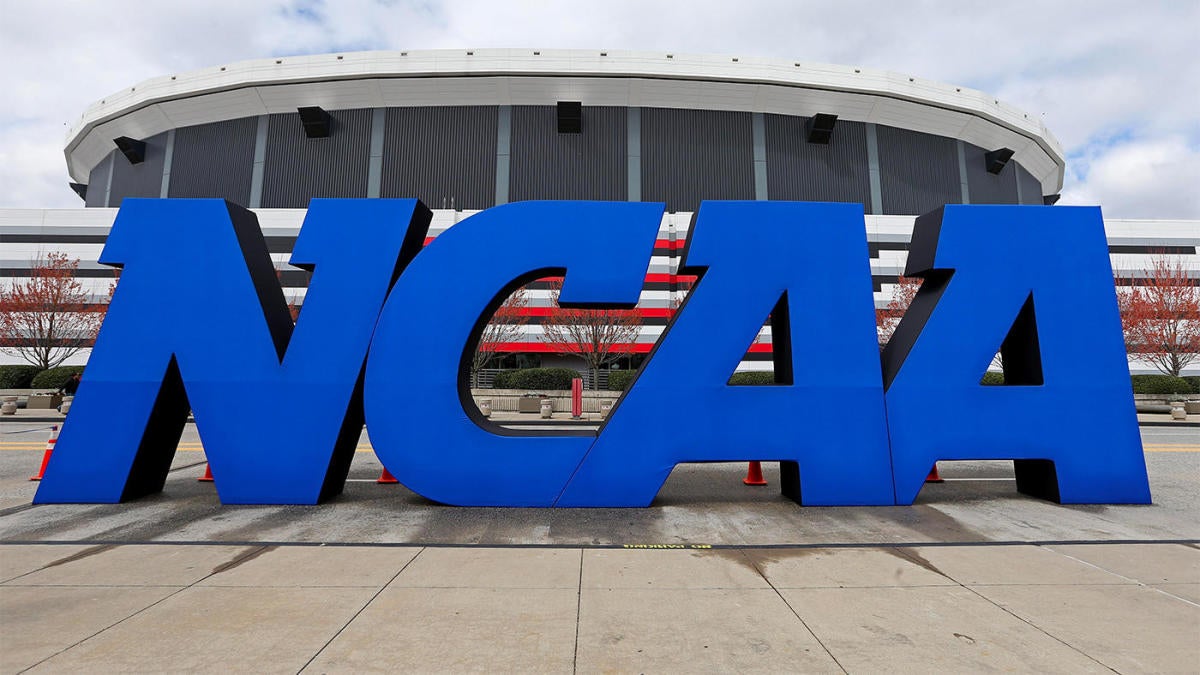

Remember when the worst thing you could say about the one-time transfer rule was that it was akin to college "free agency"? Transfers run amok, leaving on a whim to the school of their choice?
Turns out we're way beyond that.
The NCAA Division I Council on Thursday formally approved long-awaited transfer legislation that will allow all athletes in the five "revenue" sports one free transfer in their careers without sitting out a year-in-residence. The NCAA Board of Directors is expected to rubber stamp the legislation when it meets on April 28.
The implications go beyond the first glance. On its face, transfer freedom will be the latest development that diminishes the NCAA's shrinking power. The association is in this place with transfers because, as one administrator admitted to me years ago, "we were bound to be sued over it."
Transfer freedom had to be allowed because the NCAA's antiquated rules continue to be exposed to legal liability. There's also the hypocrisy to consider. The NCAA says the student-athlete experience should mirror that of the normal student. There wasn't anything normal about transfers in five sports (football, men's and women's basketball, baseball, hockey) being forced to sit out while athletes in 19 other sports did not.
"This rule change is long overdue," attorney Tom Mars told CBS Sports. "It represents a giant step in treating college athletes equally and fairly. It appears the NCAA has finally recognized that college athletes deserve the same freedom of movement as head coaches who are paid millions of dollars a year and freely move from one job to another."
Away we go with unprecedented transfer freedom.
"People say it's like NFL free agency. You hear that all the time. No, it's not," one Power Five football assistant said. "The NFL has a cap and they can pay money. You can outbid somebody. [In college,] you just gotta out-bullshit somebody."
It's more layered discussion in college sports. MAC commissioner Jon Steinbrecher, the NCAA Council vice chairman, raised the issue six years ago at his league's football media day. It wasn't fair that athletes in five sports were treated differently.
Now, thanks to his vision and others of a similar mindset, athletes can transfer where they feel the most comfortable, just like your average political science major.
"The bigger question is the future," said Todd Berry, executive director of the American Football Coaches Association.
Florida coach Dan Mullen has a vision of that future.
"I have a feeling college football will be very different a couple of years from now," Mullen said. "I can't tell you if it will be better or worse. I can't tell you how it will be different. I just think it will be different."
Here's a glimpse.
1. There are more players in the transfer portal than there are available scholarships: That's a widely-held fact in college football and basketball. There currently are more than 1,000 football players in the portal alone.
Let's be generous and assume each of the 130 FBS programs have five extra scholarships to give. (They do not. Not even close. But we're trying to make a point.) That's 650 scholarships. That also means a boat load of players who won't have a new home.
Once you declare for the portal, a coach can cancel your scholarship. So unless you're Trevor Lawrence testing the waters, you're in the wilderness.
On one hand, it's interesting how college football administrators have suddenly found religion on this this subject. "What about the kids?!" They sure didn't seem to care about the kids when they were blocking transfers on a whim.
Maybe it works its way out, maybe not. About 30% of underclassmen who declare for the NFL Draft in any given year are not selected. That number doesn't fluctuate much one way or the other despite all the advantages -- free draft projections, professional representation, enough mock drafts to fill an airplane hangar etc.
Why would college athletes be any wiser? Life isn't fair. The portal imbalance isn't going to be fixed anytime soon, but that's not a reason to deny players their transfer freedom.
2. It's may not just be a "one-time" transfer exemption: One-time transfer legislation is meant to be just that -- one move without sitting out. But if recent events and the courts have taught us anything, all you need is a capable lawyer and a waiver request to make this transfer thing a revolving door. There will inevitably be requests for a second transfer within a career by players who are unhappy with playing time, wish to be closer to home, etc. You know the reasons.
"The reality is, if you're making the right accusations, you're getting a waiver regardless," one administrator said.
And what about graduate transfers? The whole idea was to reward an athlete who had completed his/her degree. You're going to deny a senior who wants his master's the ability to transfer for a second time?
3. Roster management will be key: Something has to be done about teams especially hard hit by transfers, particularly after spring practice.
"That's the one that is catastrophic," veteran coordinator Kevin Steele said.
Consider a quarterback losing a position battle at the end of spring practice. He transfers where he can play. Now multiply that over several positions over several teams.
"People don't grasp that part of it," Mullen said. "Each year, you're allowed 25 scholarships. … Let's say we've signed 23. We finish spring ball and six kids enter the portal. I can only sign two."
That's a net loss of four players. Think about mass transfers if a coach leaves for another job.
There's a thought out there that the limit of 25 signees might be dropped as long as programs adhere to the 85-man scholarship maximum. That leads to speculation of lose one (in the portal), take one (or more from the portal as long as you have no more than 85 total).
"Everyone knows there was never any legitimate rationale for the rule other than a concern about roster management," Mars added. "As much as some head coaches may complain about that, they'll adjust and figure it out. After all, they wouldn't be getting paid millions of dollars a year if these jobs were easy."
4. The immediate winners: It's a great day for Oklahoma. Lincoln Riley's haul from Tennessee became official -- for 2021. Riley probably won the portal this offseason landing what might be three starters from the Volunteers. Running back Eric Gray could be a Trey Sermon in reverse -- energizing the OU backfield. Gray ran for 772 yards last season. Offensive lineman Wanya Morris was a former five-star prospect and a foundation of Tennessee's 2019 recruiting class. Defensive back Key Lawrence backed up in 10 games last season. Gray and Morris have two years of eligibility remaining. Lawrence has three.
Mullen had done one of the better jobs of working the portal this offseason. LSU tight end Arik Gilbert had committed to Florida in February only to decommit March 1. The five-star is now the biggest piece in the portal at the moment next to Tennessee linebacker Henry To'o To'o. Two graduate transfers are expected to contribute right way for Florida: defensive tackles Antonio Shelton (Penn State) and Daquan Newkirk (Auburn). Former five-star Clemson RB Demarckus Bowman transferred in and will officially become available right away because of this week's developments.
5. APR? What APR? The Academic Progress Rate is used annually as a measure of team academic achievement. Teams that don't measure up can receive a postseason ban.
It is basically another incentive for athletes to go to class, another reason for the NCAA to retain its control over college sports. But something will have to be done in the age of the one-time transfer. APRs are likely to suffer if a team loses scores of players who aren't replaced. Teams earn "retention points" for every player on the roster. They get one point for each athlete who stays in school and another for being academically eligible. Teams must achieve an APR of 930 to compete in championships.
During COVID-19, restrictions involving APR had been suspended, in part, because of the numerous opt outs who could impact that 930 number. Does the NCAA consider wiping out that academic component with so many players transferring?
"That looks like it's going to go away forever," Berry said.
That's yet to be determined, according to an NCAA Council member.
6. Tampering will run rampant: It goes on now. Everyone knows it goes on now. One-time transfer rules or not, athletes are going to be lured to transfer by outside sources – high school coaches, personal trainers, parents, potentially new teammates. With the doors more wide open, tampering is going to be more prevalent than ever.
"Let's call it what it is," Central Michigan coach Jim McElwain said. "Somebody makes a phone call and says, 'We got a scholarship at our school. Would the kid be interested?' There's a lot of that going on."
"Honestly when the guys reach the transfer portal, it's almost too late [to go after them]," SMU coach Sonny Dykes said. "You know about them because all these kids talk to each other. They all go through the recruiting process together."
April 16, 2021 at 04:08AM
https://ift.tt/3mPF2E5
With NCAA one-time transfer legislation adopted, players, coaches and teams will navigate uncertain waters - CBS Sports
https://ift.tt/3d5QSDO

No comments:
Post a Comment